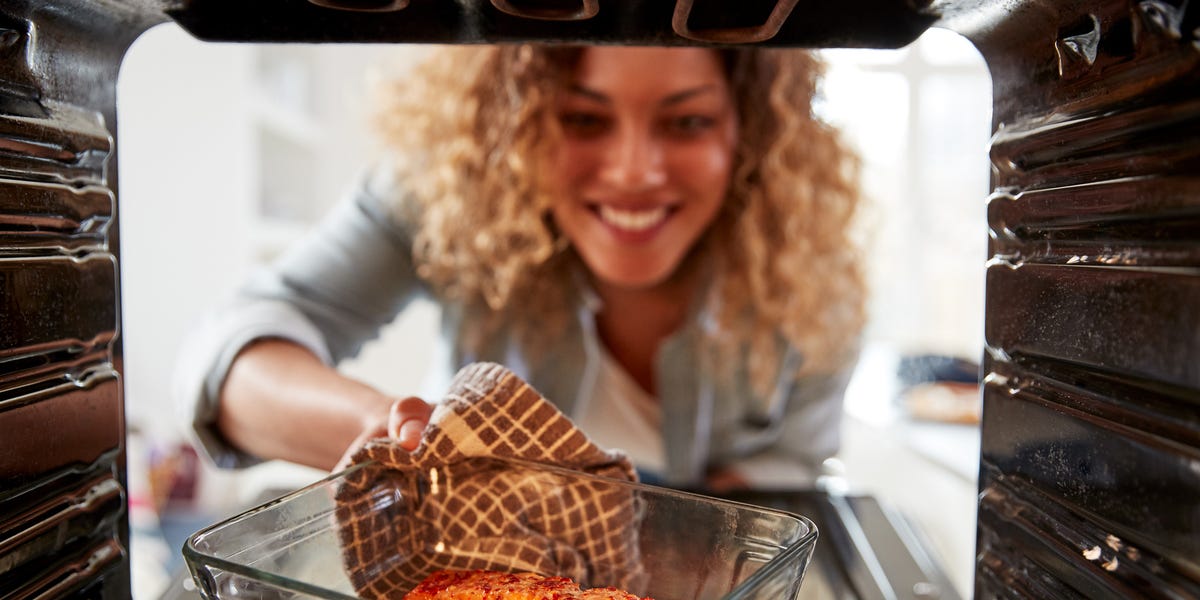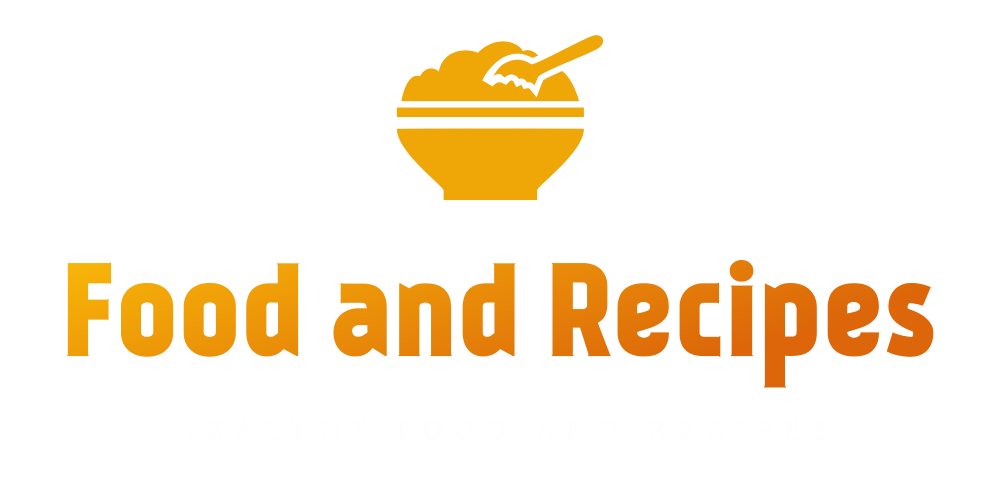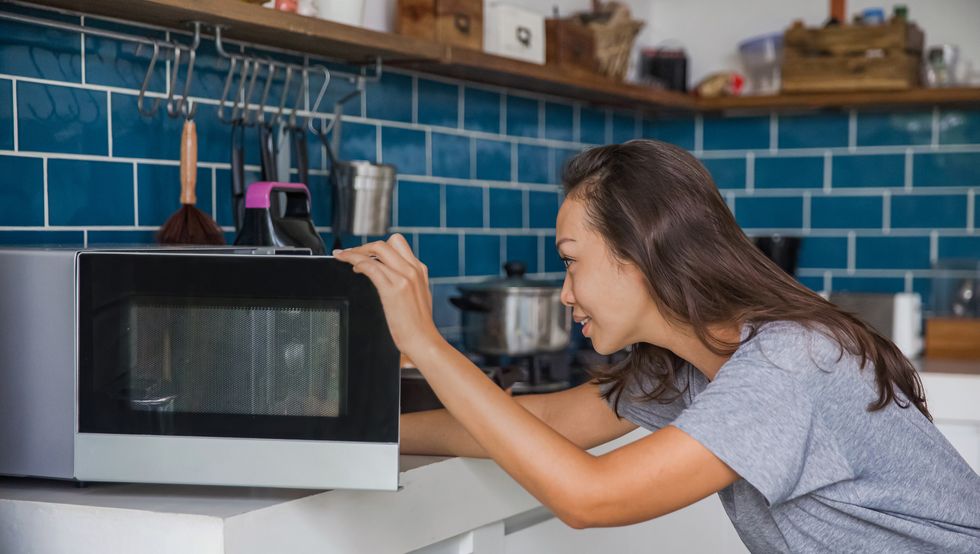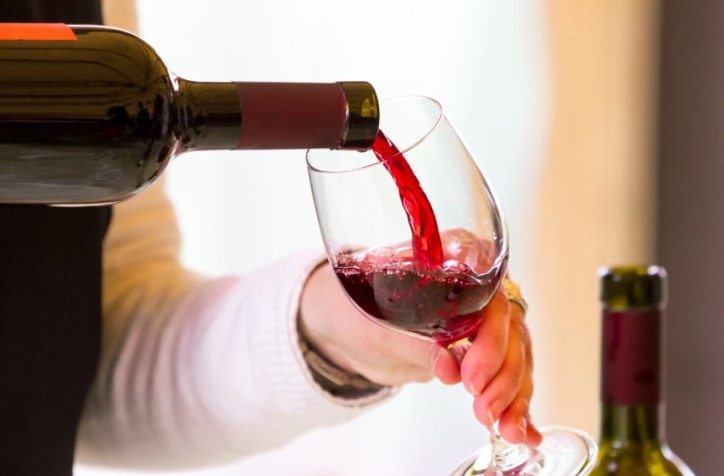
With energy costs showing no signs of falling yet, saving energy – and therefore money – looks set to remain a big topic in 2023. You probably turned down your heating by a few degrees in the colder months, started rationing tumble dryer use, and are watching your energy meter like a hawk.
According to Energy Saving Trust, 20{d2b09b03d44633acb673e8080360919f91e60962656af8ade0305d5d8b7e4889} of a home’s energy consumption occurs in the kitchen. Slow cookers may be having a resurgence, and air fryers are currently flying off the shelves – but are they actually cheaper to run than turning on the oven? Will using the microwave more really save us energy and money? And, when we do need to use the hob, what energy-saving cooking tips will help us keep our energy bills under control?
In a survey by Food Standards Scotland, 41{d2b09b03d44633acb673e8080360919f91e60962656af8ade0305d5d8b7e4889} of respondents have already changed their cooking methods to reduce gas and electricity use. We’re bombarded with advice and tips but what can we actually do when cooking to cut back on energy costs? Read on for answers to some commonly asked questions about energy efficient cooking.
Is the microwave a more energy-efficient way to cook?
In a word, yes. Utilita research puts the average annual cost of using the microwave at just £31.83, while Hometree says your microwave will use less than 2p of electricity every five minutes.
“Microwaves are cheaper to use because they only heat the food inside them unlike ovens that also heat the air around the food – plus, food takes much less time to cook,” explains Natalie Mathie, an energy expert at Uswitch. While you might use the microwave to re-heat food, it’s also possible to cook a greater range of dishes in it so now might be a good time to rethink how you use yours.
“Microwaves are best for foods with high moisture contents, as the liquids both help prevent food drying out – an ever-present issue with microwave cooking – and also speed up cooking because of the way the microwave works (literally by vibrating water molecules in food),” notes GH cookery editor Emma Franklin.
“For best results cover food tightly when cooking and stir often. Soups, stews with small pieces of meat (or no meat at all), and even risottos are all good options for microwave cookery. My favourite thing to do in a microwave however is jacket potatoes, as it massively speeds up the cooking time. They’ll still need a short blast in an oven to crisp the skin, but it takes a fluffy baked potato from a 1hr+ cook to a 15min one.”
How much does it cost to use the oven?
One of the biggest energy drains in your home is the oven. Energy company Utilita suggests an electric oven can add as much as £335 to your energy bills per year. And emergency home and boiler cover company Hometree estimate the cost of using the oven at £1 an hour.
It’s their internal cavities which make ovens less energy efficient. Instead of heating just a tray or tin of food, energy is required to heat up the whole space. However, if you have a fan oven, there is some good news. “Fan ovens can reduce energy consumption by 20{d2b09b03d44633acb673e8080360919f91e60962656af8ade0305d5d8b7e4889} as they heat and cool the oven faster than conventional electric ovens,” notes Natalie from Uswitch.
How can I save energy when I use the oven?
Rather than switching the oven on several times a day, plan your cooking schedule carefully. Slide in a traybake as you pull out a main meal and you can avoid pre-heating the oven twice.
Make the most of the heat
Residual heat is energy which would otherwise be wasted but can be useful. Natalie says: “Residual heat is heat that remains after something like a hob or oven has been heated up. You can use it to warm food, potentially saving energy.” Warm up bread rolls, toast nuts or heat the dinner plates.
In some circumstances, you might also be able to use the residual heat to finish cooking food, or to save energy by not pre-heating the oven.”If you’re cooking a stew, a braise or a low-temperature meaty slow cook, you can get away without pre-heating the oven – just pop the dish in when you turn the oven on, and you can also turn the oven off 5-10min before the end of the cooking time and use the residual heat to finish the cooking process,” explains Good Housekeeping cookery director Meike Beck.
“For things like pastry, cakes, biscuits or bread that require a more accurate oven temperature and cooking time, however, you’re better off pre-heating the oven as normal and leaving the oven on for the full time stated in the recipe.”
Batch cook to save cash and energy
Home cooked meals are a great opportunity to cook in bulk. Use the hob just once for a big pan of chilli or curry then freeze cooled leftovers to eat later or use as a base for another meal.
Take advantage of the shelves in your oven: rather than cooking one lasagne, batch cook a couple then freeze what isn’t used for another day: you’ll be saving time and energy costs.
Archie Lasseter, Sustainability Lead at Utilita Energy says: “On average, batch cooking can save households up to £112 a year in energy costs, according to our calculations. By cooking a batch of different foods at the same time, you’ll only use the energy once, rather than putting the oven on for each individual meal. Once cooked and cooled, portion the meals up and freeze them.”
Does an air fryer use less energy than the oven?
Yes. An air fryer costs around 30p per hour to run, says Hometree. That’s less than a third of the cost of using the oven. So, while the cost of energy remains high, it’s well worth investigating different options rather than automatically heading to the oven.
Does a slow cooker use less energy than the oven?
Yes. A slow cooker will cost 5p of energy an hour, according to Hometree. That’s roughly 5{d2b09b03d44633acb673e8080360919f91e60962656af8ade0305d5d8b7e4889} of the cost of cooking in the oven. Slow cookers save us money and hands-on time in the kitchen and they are also a gift for batch cooking.
Crockpot Senior Home Economist, Zoe McClean has some advice for wannabe batch-cooking chefs: “Doubling up your recipe or adding in extra veggies to stews and curries will give you extra portions of food for freezing. These can be perfect for work lunches or speedy suppers.”
Slow cooking can be a route to healthier, and often cheaper, meals too: “Having a meat-free meal each week is easy, bag up your chopped up veggies the night before to add into your pot in the morning for your chosen recipe. Look out for reductions in the fresh vegetable section of your supermarket for batch soup recipes. Frozen vegetables can be used in your slow cooker, you will need to add these towards the end of the cooking as they won’t need as long as other ingredients. It’s the same with canned beans and pulses.”
Slow-cooked meals often mean using a cheaper cut of meat, too. Zoe explains: “A slow cooker pulled pork recipe can be used in a number of different meals. Pork shoulder is often a cheaper cut of meat and can be used in pulled pork burgers, stirred into a jar of your favourite pasta sauce for a quick and easy ragu. Or even spiced up and served with nachos, topped with melted cheese and jalapenos.”
How can I save energy when I reheat food?
Your labelled tubs or bags of batch-cooked meals can be defrosted in the fridge and re-heated in the microwave. Avoid the oven! Archie advises: “When it comes to reheating each meal, head to the microwave. A microwave costs approximately 14p per day to run, compared to an oven which costs 87p.
“To save more energy, leave the meal to defrost before putting it in the microwave.” It’s also important to ensure foods are thoroughly defrosted before you start re-heating, or you could end up allowing bacteria into your dishes. It pays to be organised: take food out of the freezer the night before and leave to defrost in the fridge overnight or until it is thawed. The Batch Lady aka Suzanne Mulholland recommends setting an alarm on your phone for 6pm every evening to remind you to get the following day’s meal out of the freezer.
How can I save energy when I cook on the hob?
Hometree estimates hob cooking costs 17p per quarter of an hour – that means it’s likely to cost around three times more to boil or steam veg in a pan than it would be to cook them in the microwave. However, sometimes the hob is the best option and whatever your set-up, there are tweaks you can make to ensure more efficient cooking.
Put a lid on it
Always put a lid on a pan of boiling water. It sounds simple and it is: the pan and liquid will heat up quicker and use 85{d2b09b03d44633acb673e8080360919f91e60962656af8ade0305d5d8b7e4889} less energy than an uncovered pan.
Gas vs electric
Currently, the unit price of gas is cheaper than electricity. However, an electric induction hob is a more efficient because a gas hob will always mean some energy will be wasted: with an induction version, all the heat is used. Nevertheless, Bob Kerr, field services director at Gas Safe Register, tells us: “The use of gas for cooking at home across the nation is widespread. According to research by the Department for Business, Energy & Industrial Strategy, it’s estimated that over half of householders have a gas hob and nearly quarter use a gas oven.”
Stick to quick-cook dishes
Leave stews and casseroles to the slow cooker – dishes which cook quickly are the best economy for hob-cooking. Think pasta, stir fries and fast-boiling veg.
Use the right pan
The size of your pan makes a difference, too. Using a pan which is smaller than the hob means there’s heat escaping and being wasted. Instead, Natalie has a recommendation: “Matching the pan to the size of the hob is the most efficient way of cooking. If the hob is too big you will lose energy on the sides, while a small hob won’t effectively heat the whole pan.” This tip can save around 40{d2b09b03d44633acb673e8080360919f91e60962656af8ade0305d5d8b7e4889} of the energy that would otherwise be wasted by using a pan that’s too small.
There’s a safety aspect here, too. Bob reminds us: “Not only will using the right sized pan this help save energy, but it will allow the correct amount of air to circulate around the hob flame, preventing incomplete fuel combustion and the production of carbon monoxide.”
Keep the hob clean
A dirty hob can cost you! Bob advises, “Always make sure your gas hob is clean – it’s always good practice to clean the heating rings on the hob regularly. This is to help maintain energy efficiency as debris stuck to the ring will absorb heat, making it less energy efficient.”
What is passive cooking?
Passive cooking is an energy-saving cooking technique you can use when you’re boiling something on the hob. It involves turning off the heat under your pan before the end of the cooking time and letting the heat in the water finish the job of cooking the food. It’s not a modern concept – in fact, it was used in the 19th century – so how does it work?
If you’re cooking pasta, add the pasta to a pan of boiling water as normal and leave the heat on for two minutes. Then switch off the heat and leave the pan on the hob, with a lid on for the remaining cooking time. The already-boiled water will finish cooking the pasta.
The Centre for Sustainable Energy estimates the cost of using an electric hob for 10 minutes to be 10p, so by implementing passive cooking you could cook a pan of pasta for just 2p.
Sophie Nahmad, Chef at food box service Gousto, says: “Passive cooking works great for green veggies – add them to boiled water and leave for a few minutes. Cooking time just depends on how much bite you like your veggies to have. It works well for poached eggs too – simply crack an egg into boiled water to let it cook until soft-set.”
But be aware that not all dishes can be cooked in this way. Sophie warns: “I would avoid passive cooking with meat as you won’t be able to guarantee that it’s cooked all the way through, and similarly, potatoes or pulses, as they need to be fully cooked to be safe for consumption.”
How else can I save energy in the kitchen?
There are energy savings to be made all around the kitchen. Maybe you boil a full kettle every time you have a cuppa but you’ll save power – and pence – if you boil what you need each time (just be aware of the kettle’s minimum boil level). Some thrifty consumers also swear by filling a thermos with hot water first thing then brewing hot drinks from it all day.
If you’re batch cooking and freezing meals, make sure your freezer is running as energy efficiently as possible. Believe it or not, a well-stocked freezer runs better than one which is empty. Archie Lasseter from Utilita tells us, “A full freezer uses less energy than one that has space inside, so by filling your freezer you’ll also use less energy.”
Defrost your freezer whenever you see ice building up, and avoid leaving the fridge or freezer door open longer than necessary.
And if you’re buying a new kitchen appliance…
…bear in mind that energy ratings were overhauled in March last year.
The Energy Saving Trust (EST) advises: “Energy labels are rated on a scale of A to G, with A being the most efficient. For some product categories, the best available might be a D or an E as we expect these products to become more efficient over time.”
To help keep energy bills down in the long term, think carefully about how big a freezer you really need, for example. The EST says that a G-rated, 265-litre fridge freezer could cost around £100 a year to run, whereas a larger 424-litre fridge freezer with a better F rating could cost around £105 a year to run based on October 2022 price cap levels.










